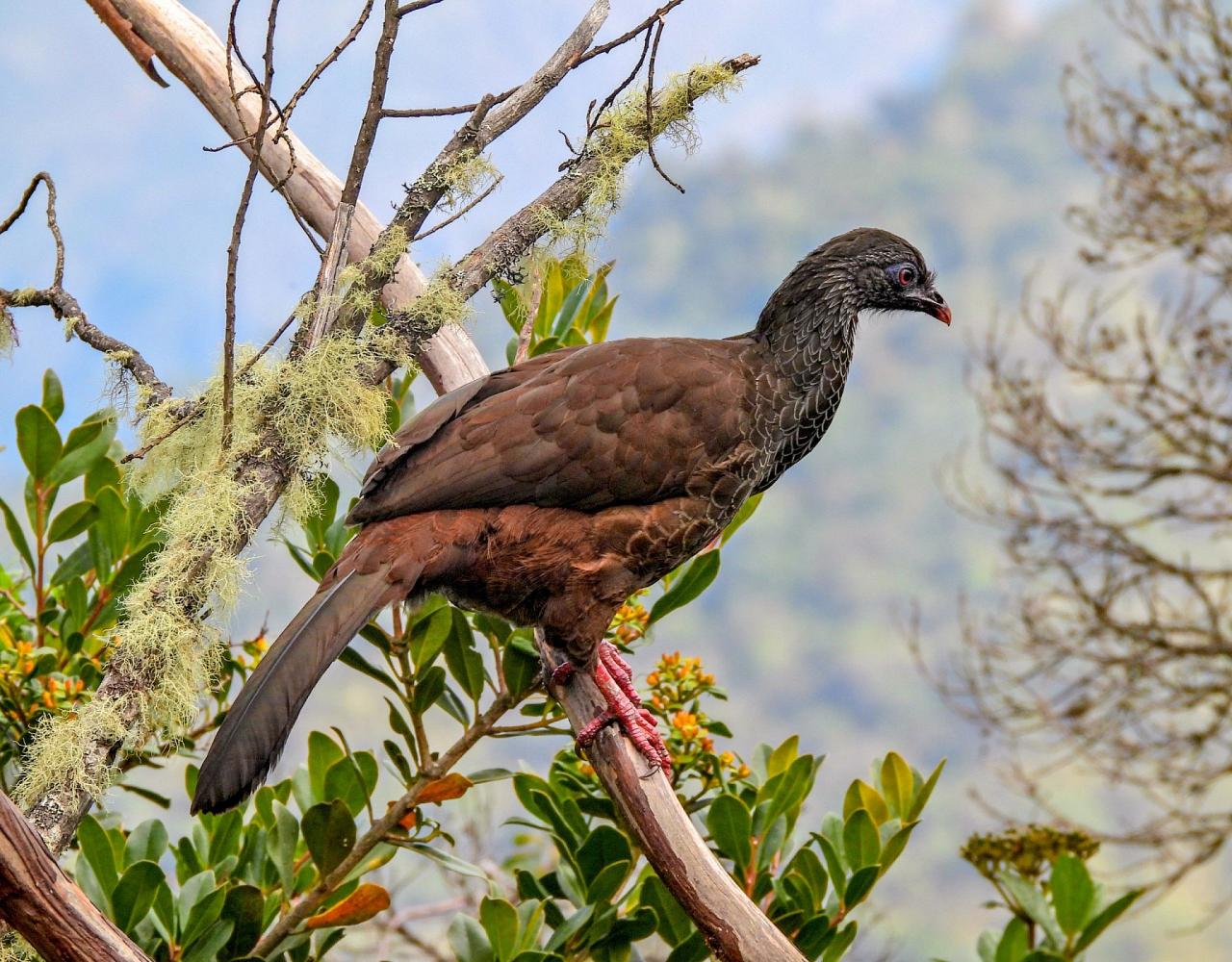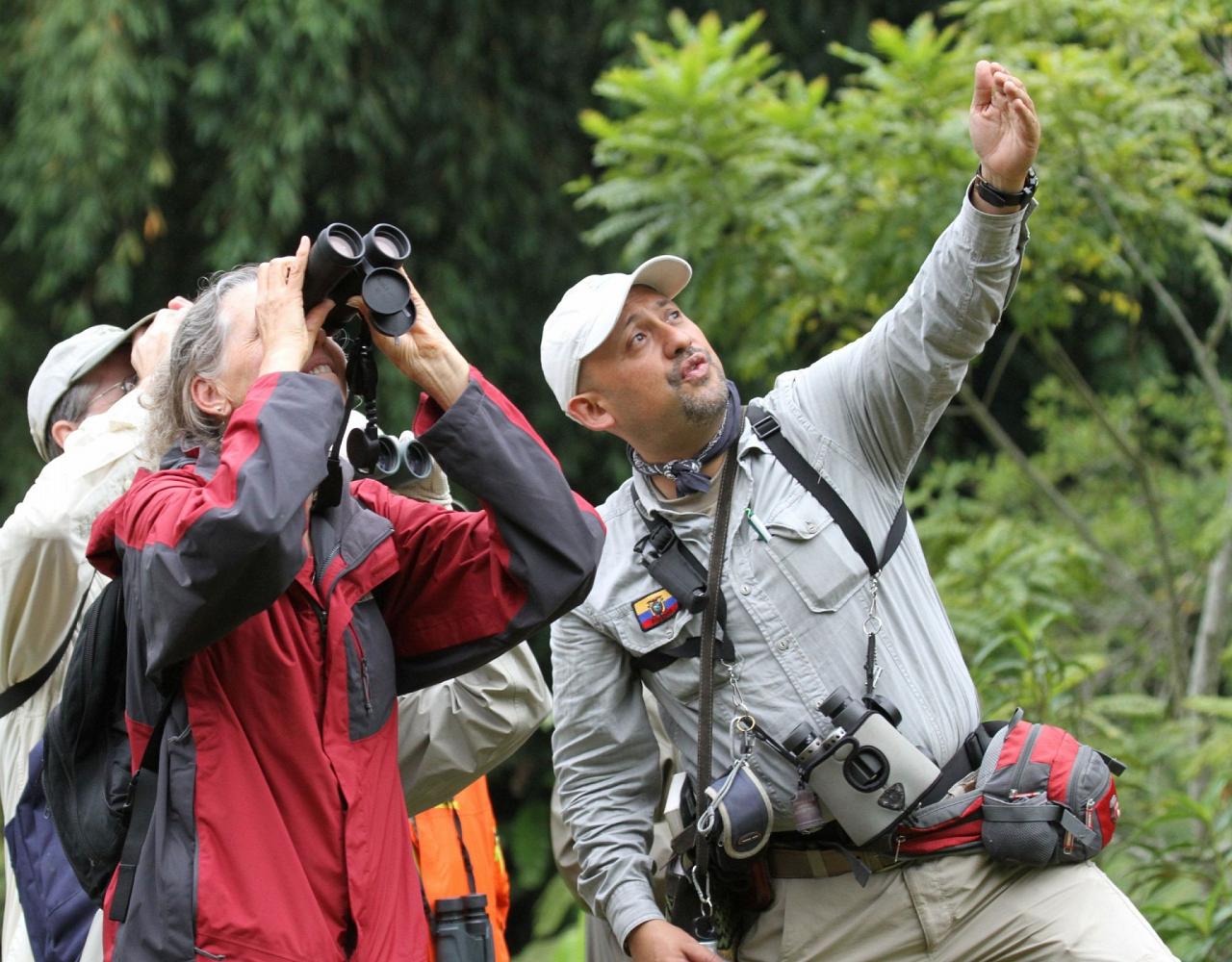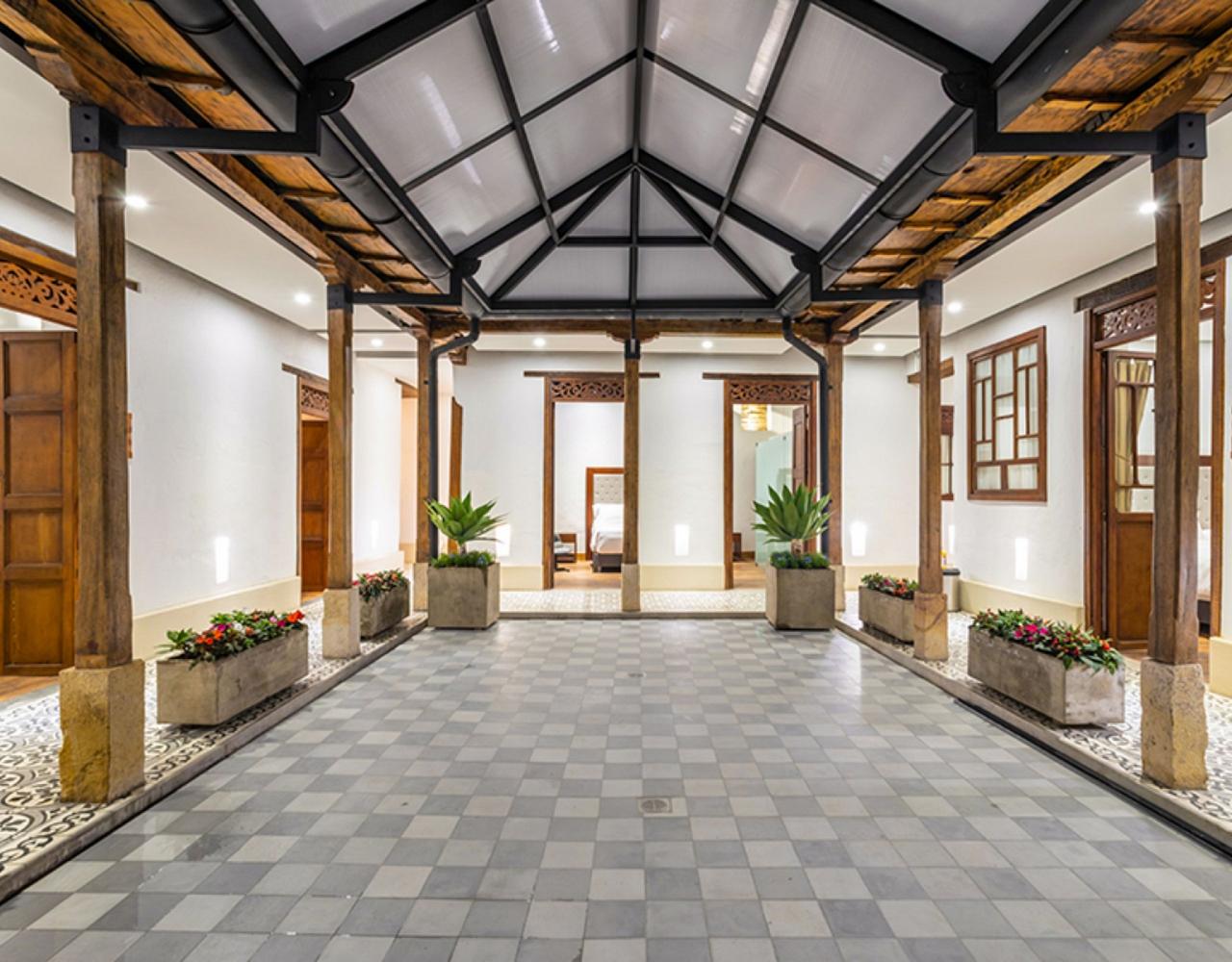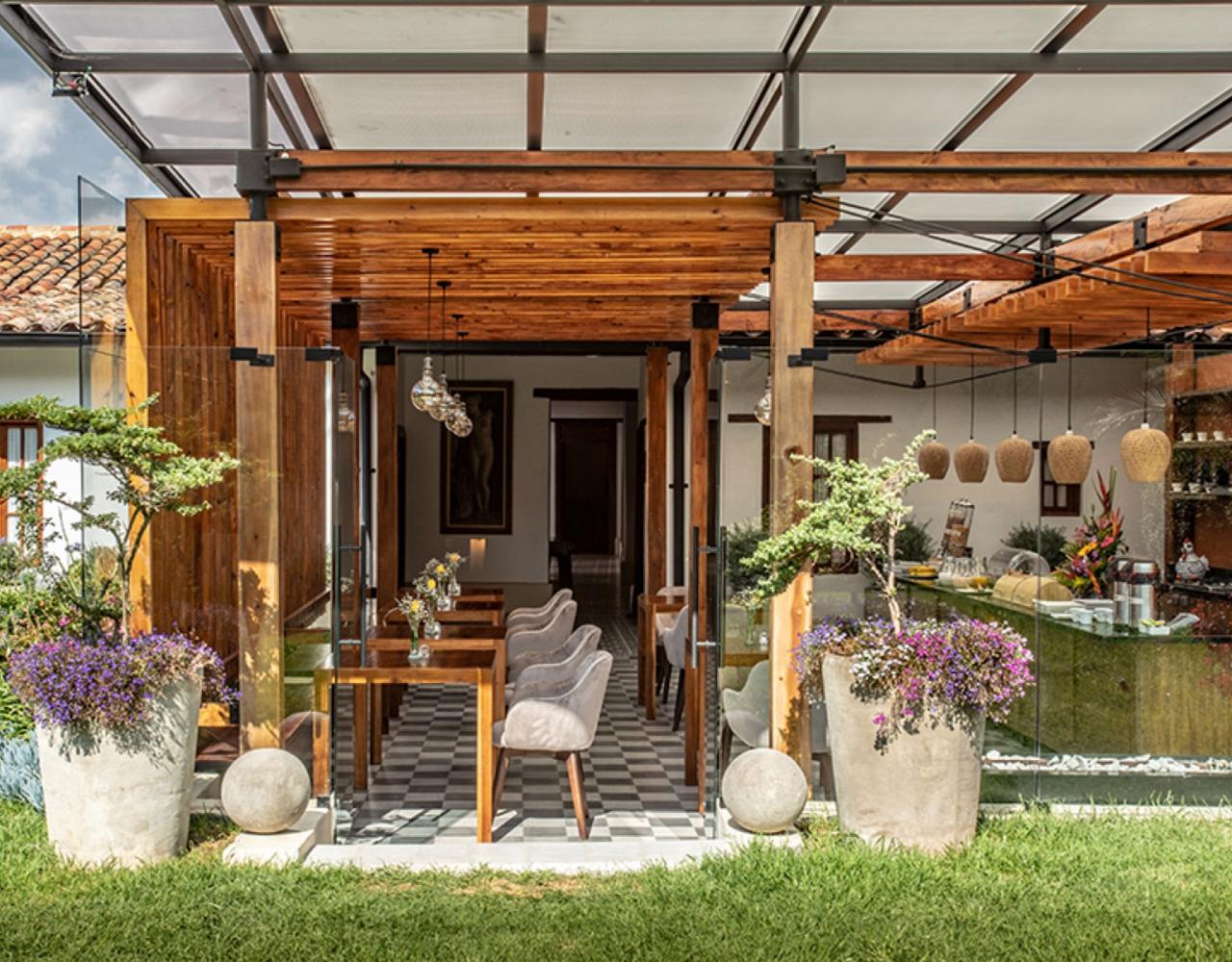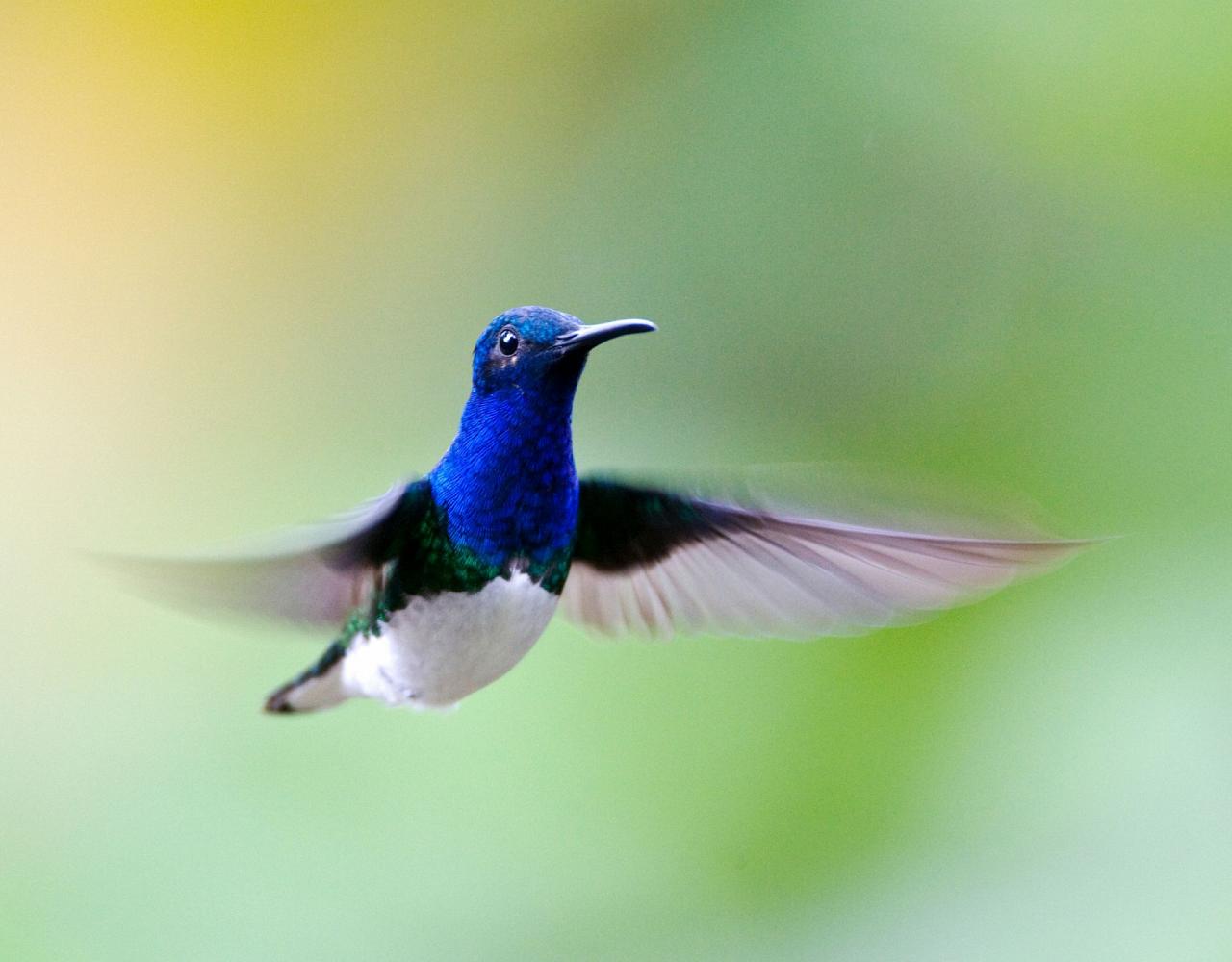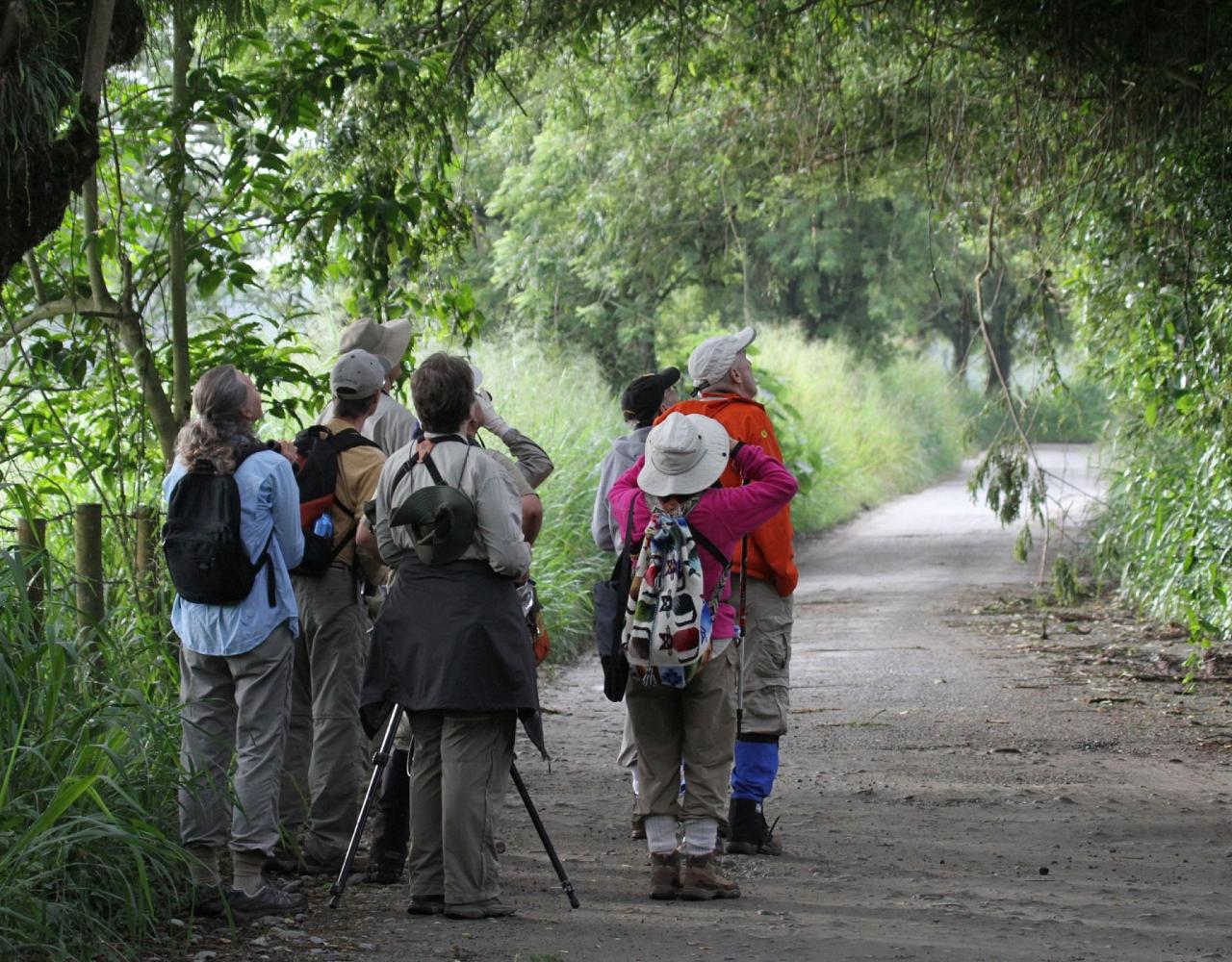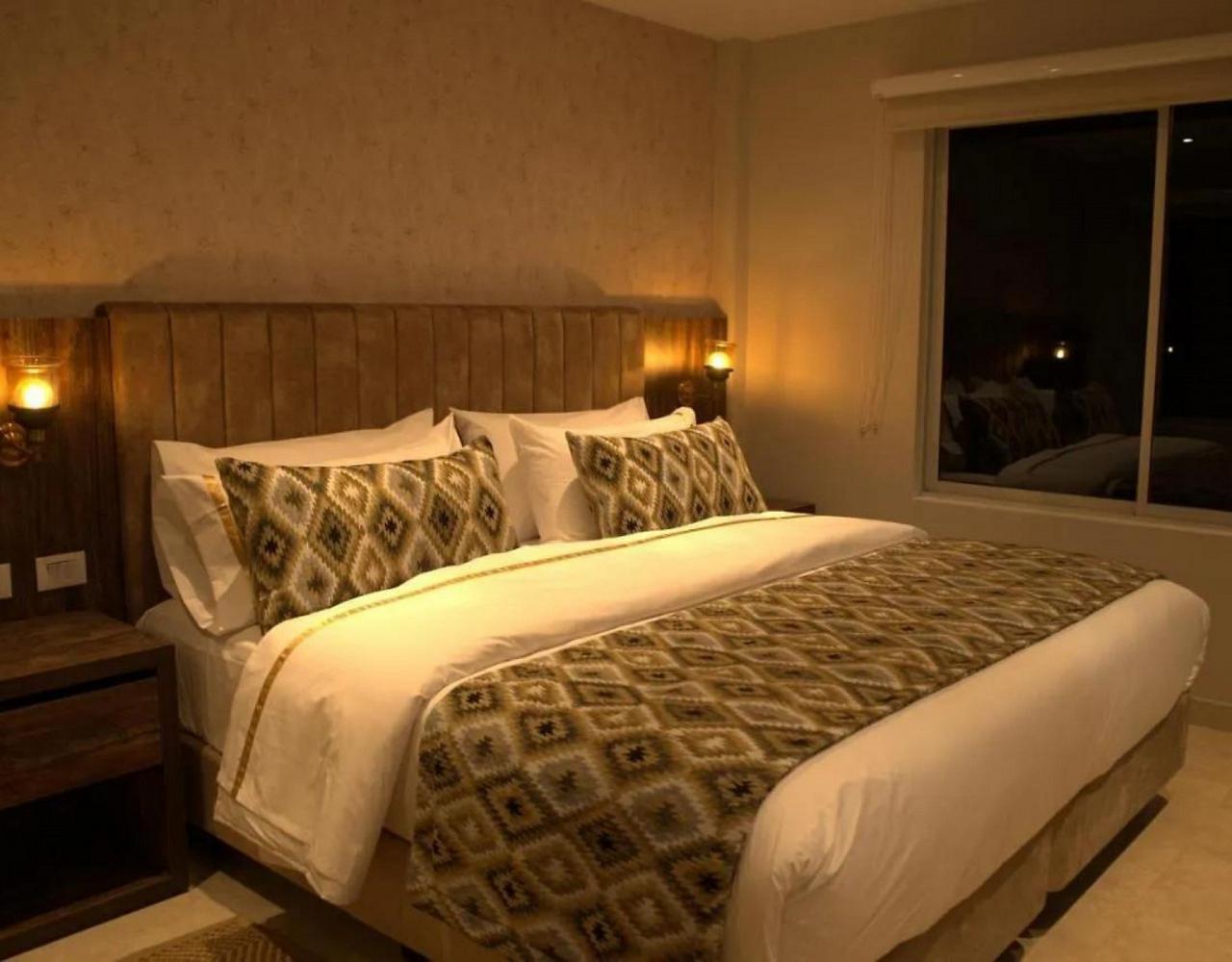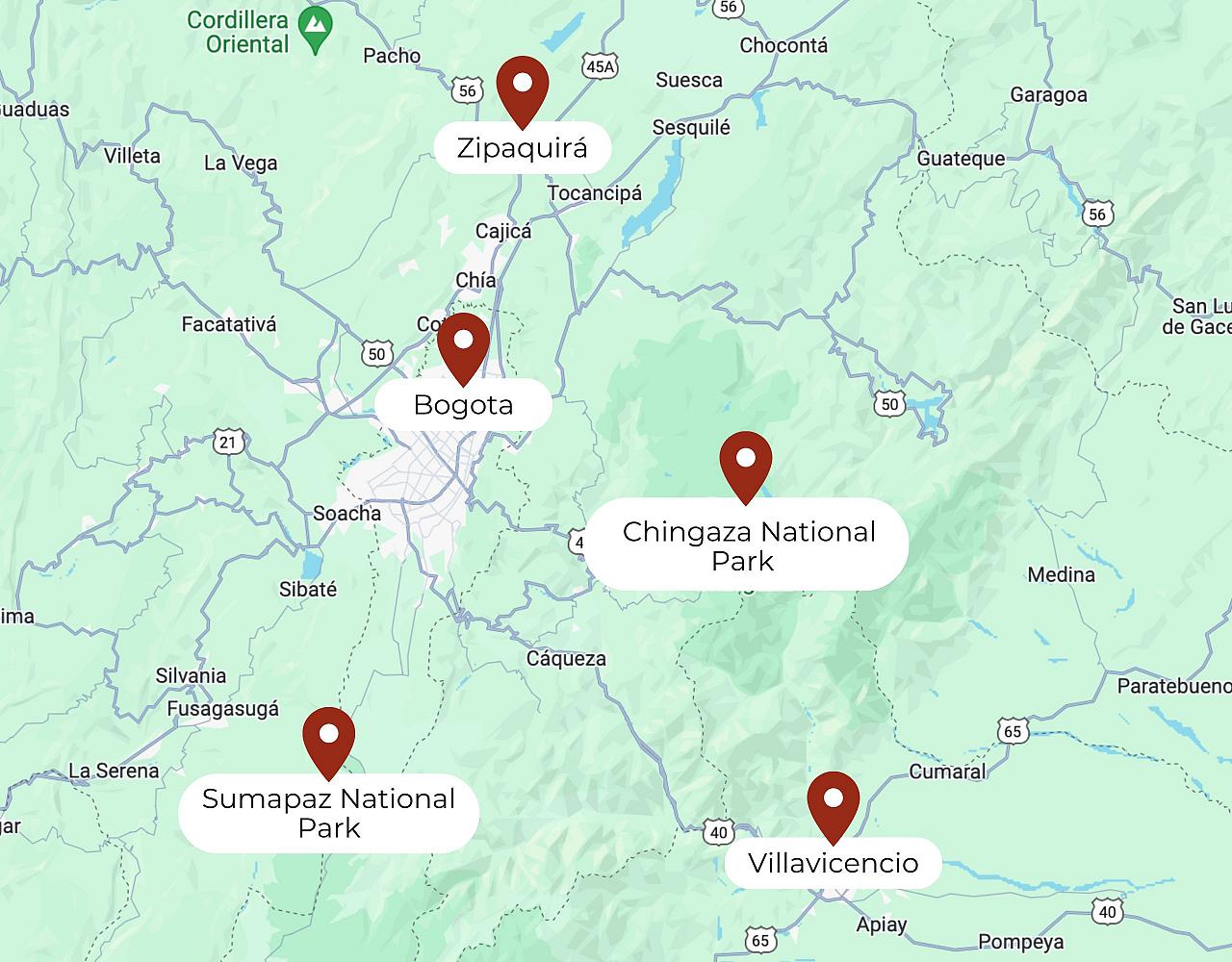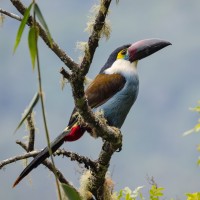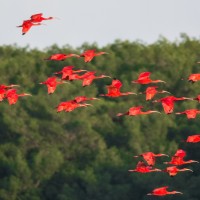- Overview
- Full Itinerary
- Extensions
- Photo Gallery
- Costing
- Travel Details
- Trip Reports
- Guide
- Map
- Know Before You Go
- Other Trips You May Like
This short and sweet Bogota-based Colombia birding tour is designed for a quick, birdy, and fun getaway. With more bird species than any other country in the world, a wide variety of stunning landscapes, and friendly hospitality, Colombia is a country that should be on everyone’s bucket list. The mild weather in winter and easy flight from Miami and other gateway cities just add to the appeal! Many Colombia itineraries are long, as there are many regions of the country to explore. After one visit we know you will want to return, so we’re pleased to offer a great short trip from Bogota for those of you on the go, or just wanting a quick getaway. Join Naturalist Journeys for this year’s short trip, a seven-day exploration of two of the top Colombian sites sampling montane forests, páramo and lowland forests for a delightful week of birding. The number of hummingbirds alone is amazing!
Discover the birding hotspots of Tabacal Lake and Florida Park before turning south to Sumapaz National Park, which boasts the largest páramo ecosystem in the world along with an array of bird species, including endemics like Bogota Rail and Green-bearded Helmetcrest. This fascinating tundra-like environment hosts amazing flora as well, including lush cushion plants adapted to windswept open terrain.
Our final stop is Villavicencio, where we spend two days exploring the lowland foothills of Bosque Bavaria and Aitabu Forest, home to over 400 bird species. All of this in just seven days while enjoying a Naturalist Journeys pace and style: staying in wonderful accommodations, enjoying delicious meals, and of course, waking up every morning to a cup of world-renown Colombian coffee.




Tour Highlights
- Bird in a variety of habitats, from lowland tropical rainforests and wetlands to páramo and high Andean forests
- Search the subtropical forests of Tabacal Lake for White-bearded Manakin, the endemic Velvet-fronted Euphonia, and many colorful tanagers
- Explore the beautiful and unique páramo in Sumapaz National Park
- Spend two days exploring sites around Villavicencio for lowland species such as the distinctive Yellow-tufted Woodpecker, the brilliantly colored Blue Dacnis, and the beautiful Purple Honeycreeper
- Enjoy great photography opportunities with several feeder visits throughout the tour where a host of hummingbirds and tanagers await!
- Extend your stay on your own to explore Colombia’s capital city of Bogota
- Opt for our Chingaza National Park pre-tour extension to explore the high paramo habitat and a chance to see Spectacled Bear
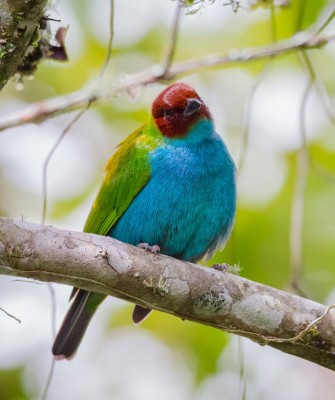
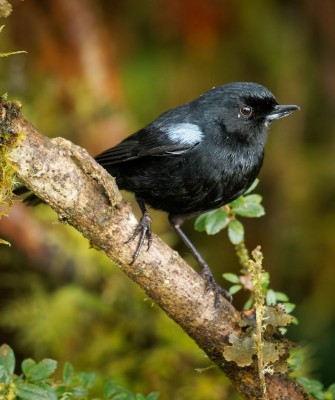
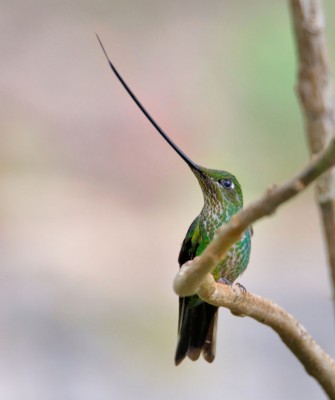

Trip Itinerary
Itineraries are guidelines; variations in itinerary may occur to account for weather, road conditions, closures, etc. and to maximize your experience.
Sat., Dec. 6 Arrivals in Bogota | La Florida
Welcome to Colombia! Arrive today at the El Dorado International Airport (BOG) in Bogota by 12:00 PM. You are met at the airport by our local representative.
Once everyone has arrived, we head north out of the busy city to head to La Florida in Bogota. An area once covered in wetlands, now only a few remain as part of a conservation and reforestation project. Despite being in a bustling city of 10 million people, La Florida is a great birding spot, and we have a chance to see a variety of birds. We walk along nice paths along the water to look for Bogota Rail, Spot-flanked Gallinule, Yellow-hooded Blackbird, Andean Ruddy Duck, and Black Flowerpiercer.
After exploring the wetlands, we head to our lovely accommodations at the Estancia San Antonio. We gather for a welcome dinner in the evening to get to know our guides and fellow travelers.
Accommodations at the Estancia San Antonio (D)
Sun., Dec. 7 Guajira Forest | Los Andes Bird Observatory
After breakfast, we head to the pristine Guajira Forest Reserve, located in the charming municipality of Guasca. As we head to this exceptional birding area in high-Andean and sub-paramo forest, we pass local crop farms, livestock pastures, and both primary and secondary forests. Initiatives from local farmers in this area have led to at least three privately protected areas. We explore this area on easy, unpaved roads as well as visiting feeders. Birds we expect to see in this area include Amesthyst-throated Sunangel, the endemic Brown-breasted Parakeet, Rufous-browed Conebill, Rufous Antpitta, and Black-billed Mountain-Toucan. Photographers can enjoy the active feeders with visits from White-bellied Woodstar, Longuermare’s Sunangel, Blue-throated Starfrontlet, and both Lesser and Sparkling Violetears.
In the afternoon, we head to the Los Andes Bird Observatory, which is a great location for the photographers in the group! Located on a farmhouse near the buffer zone of Chingaza National Park, the feeders and gardens here are frequently visited by a variety of species. Birds we may see here include the dazzling Blue-throated Starfrontlet, the large Great Sapphirewing, Shining Sunbeam, and the very long-tailed Black-tail Trainbearer, and Sword-billed Hummingbird, which has the longest bill compared to its body size of any bird in the world. Muisca Antpitta, which is mostly endemic to Colombia, is also possible here.
After a great day in the field, we head to our hotel in Bogota and enjoy a delicious dinner.
Accommodations at the Hilton Garden Inn (B,L,D)
Mon., Dec. 8 Sumapaz National Park | Villavicencio
After breakfast, we head about 2 hours south of Bogota to Sumapaz National Park. Famous for having the largest páramo in the world, Sumapaz is also incredibly scenic. It was designated a national park in 1977 not only because of the incredible biodiversity, but also because of its importance as a water source for Bogota. The dominant plant in the park, common in the páramo ecosystem, is the Espeletia, commonly known as frailejónes. There are several species of frailejónes in the park and these sometimes whimsical looking plants are highly adapted to the harsh conditions of the high altitude.
We spend our time here walking on easy dirt roads at an elevation of around 12,000 feet, looking for the many species that call this somewhat harsh environment home. We look for the endemics in this area that include the endangered Apolinar’s Wren, Silvery-throated Spinetail, and Pale-billed Tapaculo. Other species here include Noble Snipe, Many-striped Canastero, Glossy Flowerpiercer, Green-bearded Helmetcrest, and we keep a watchful eye out for Black-chested Buzzard-Eagle soaring above.
In the afternoon we head east to Villavicencio, located on the Llanos plains to the east of the Andes. Upon arrival, we check into our accommodations at our lovely hotel, set just outside the city with spectacular views.
Accommodations at the Hotel Aitabu (B,L,D)
Tues., Dec. 9 Villavicencio | Humedales El Silencio
After breakfast, we head about 40 minutes from Villavicencio to the El Silencio Wetlands. This private reserve has two expansive wetlands that are full of bird activity. The climate here is typically hotter and wet, with an average rainfall of 180 inches. This new environment, different from the higher elevation areas we have visited the past few days, means many new birds!
We walk flat trails to explore this area in search of birds such as Hoatzin, Sunbittern, Limpkin, Boat-billed Heron, Many-banded Aracari, and Masked Cardinal. A vibrant population of monkeys are found here including the Squirrel Monkey, the elusive Zocay Monkey, and the Brown-faced Capuchin.
We return to the hotel late in the afternoon and enjoy a deliciously prepared dinner this evening.
Accommodations at the Hotel Aitabu (B,L,D)
Wed., Dec. 10 Villavicencio | Bavaria Forests
After breakfast and some delicious Colombian coffee, we head to the Bavaria Forests, located on the outskirts of the city. The forest is a patch of humid, tropical rainforest at the transitional foothills between the Andes and the savannah. This blend of ecosystems creates a high bird diversity and over 400 species have been recorded here. The Halcón Colorado Natural Reserve is located on top of the Bavaria mountain and we enjoy breathtaking views across the Colombian Llanos.
We spend the morning here, immersed in this tropical rainforest looking for colorful species such as Paradise Tanager, Turquoise Tanager, and Speckled Tanager along with Golden-headed and Striolated Manakin, the often loud Speckled Chachalaca, Gilded Barbet, Crested Oropendola, and beautiful small members of the toucan tribe such as Lettered and Chestnut-eared Aracaris.
In the afternoon, we have time to relax and enjoy the refreshing pool at the hotel. Later in the day, we spend some time birding nearby.
Accommodations at the Hotel Aitabu (B,L,D)
Thurs., Dec. 11 La Herreria | Monterredondo | Bogota
We say goodbye to Villavicencio today and make our way north, back to Bogota. Just outside of town we stop at La Herreria in Cundinamarca, renowned for its biodiversity and beautiful scenery. We walk a trail that goes through a variety of habitats including primary and secondary forests, open areas, and scrublands. Conservation efforts here are focused on the endemic and endangered Cundinamarca Antpitta, only discovered about a decade ago. Today, to the delight of birdwatchers, it is a frequent visitor to a set of well-maintained feeders. This species is tightly range restricted and this is one of the only locations the bird is known to exist. Other species we hope to see at La Herreria include Andean Potoo, Longuemare's Sunangel, Schwartz’s Antthrush, South American Leaftosser, the rare Greater Scythebill, and the brightly colored Golden-crowned Tanager.
Located just north of La Herreria, Monterrerdondo is another great birding area consisting of a mixed habitat of crop fields, patches of Andean forest, and high elevation forest. The complex topography of the terrain and slopes have allowed most of the forested areas to remain almost intact and nearly 500 species have been observed here. Species we may see include Andean Pygmy-Owl, Green-and-black Fruiteater, Slaty-crowned Antpitta, Brown-breasted Parakeet, Rufous-crowned Tody-Flycatcher, and Andean Solitaire.
After lunch, we continue our journey back to Bogota and back to the hotel where we enjoy our farewell dinner and a chance to recount the highlights of our quick, but wonderful week in Colombia.
Accommodations at the Hilton Garden Inn (B,L,D)
Fri., Dec. 12 Departures
After breakfast, we facilitate departures to the airport to match up to your flights. (B)
Chingaza National Park Pre-Tour Extension
Itineraries are guidelines; variations in itinerary may occur to account for weather, road conditions, closures, etc. and to maximize your experience.
Thurs., Dec. 4: Arrivals in Bogota
Welcome to Colombia! Arrive today at the El Dorado International Airport (BOG) in Bogota at your leisure. You are met at the airport by our local representative.
Meals today are on your own, but the hotel has a nice restaurant and bar onsite. If others arrive early, you can meet casually for a meal or drinks if you'd like.
Accommodations at the Hilton Garden Inn
Fri., Dec. 5: Chingaza National Park
We head out in the early morning to Chingaza National Park, established in 1977 to protect the unique páramo ecosystem that occurs in high elevation areas of the tropics. It is dominated by tussock grasses, low-growth vegetation, and shrubs. The park is not only ecologically important, but it also provides 80% of the drinking water to Bogota. Elevations here range up to 12,000 feet, but we have easy walks along lightly traveled unpaved roads, moving at a birder’s pace.
As we walk along the dirt roads in Chingaza, gazing at the beautiful scenery, we may see a Copper-bellied Puffleg or Purple-backed Thornbill whizzing by. Other birds we hope to see in this area include Scarlet-bellied Mountain Tanager, Masked Trogon, Rufous-browed Conebill, the aptly named Grass-green Tanager, and perhaps the rare Paramo Seedeater. In addition to a great variety of birds, Chingaza is one of the best places to spot the very elusive Spectacled Bear, along with other mammals such as Tapir and Western Mountain Coati.
In the late afternoon we return to Bogota for dinner.
Accommodations at the Hilton Garden Inn (B,L,D)
Cost of the Journey
$3990 DBL / $4290 SGL from Bogota, and includes: airport transfers, accommodations for 6 nights, meals as specified in the itinerary, professional guide services, local guides, local park and reserve entrance fees, and miscellaneous program expenses. Tour cost does not include roundtrip airfare to or from Bogota, or items of a personal nature like laundry, telephone, drinks from the bar, or gratuities for porterage or personal services.
Cost of the pre-tour extension is $545 per person.
Travel Details
Please plan to make air travel plans only after the minimum group size has been met. We will send you a confirmation email as soon as the trip has been confirmed.
Arrival and Departure Airport: El Dorado International Airport (BOG) in Bogota
Pre-tour Extension Arrival Details: Please plan flight to arrive at your leisure on December 4, 2025.
Main Tour Arrival Details: Please plan flights to arrive December 6, 2025, no later than 10:00 AM
Departure Details: Please plan flights to depart December 12, 2025, at your leisure
Travel Tip: If you arrive early to avoid weather delays or rest up from your travels, we recommend booking a room at the Hilton Garden Inn Bogota Airport. It's conveniently located a few minutes away from the airport and has a restaurant and bar on site.
Browse below for trip reports and species lists from past versions of this and other tours from this destination.
Colombia
- November 2014
- March 2016
- February 2018
- February 2019
- November 2022
- January 2023
- August 2023
- January 2024
- December 2024 (Short & Sweet from Bogota)
- January 2025
- March 2025 (Santa Marta)
-
Robert Gallardo

A California native who moved to Honduras in 1993 for the Peace Corps, Robert stayed to make a life there, diving headfirst into the world of tropical birds. He is now considered the country's leading authority on both avifauna and butterflies – a double expert on beautiful flying things. He leads tours for Naturalist Journeys to Panama, Honduras, Texas and Trinidad & Tobago. Robert is the current President of the Pro Nature Honduras Foundation, a small non-profit which promotes nature-based sustainable tourism and environmental education. He is also the co-founder of the Honduran Ornithological Society. He has authored two editions of the "Guide to the Birds of Honduras." He and his partner Olivia hope to publish the "Guide to the Butterflies of Honduras" sometime in 2022. The couple lives in Emerald Valley where they protect 50 acres of rich mid-elevation rainforest and are working to install a nature center with their foundation.
Other trips with Robert Gallardo
-
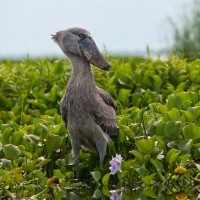 Grand Uganda FULL - Check out Deltas to Dunes: A Botswana-Namibia Safari!July 7 - 24, 2025
Grand Uganda FULL - Check out Deltas to Dunes: A Botswana-Namibia Safari!July 7 - 24, 2025 -
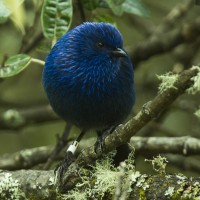 Birds & Mammals of Ecuador's AndesNovember 17 - 30, 2025
Birds & Mammals of Ecuador's AndesNovember 17 - 30, 2025 -
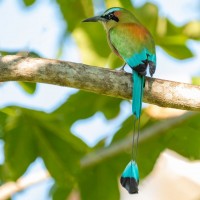 Honduras: Stellar Birding & Maya RuinsFebruary 9 - 17, 2026
Honduras: Stellar Birding & Maya RuinsFebruary 9 - 17, 2026 -
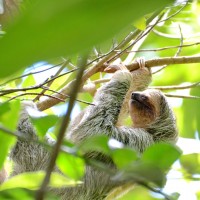 Panama: Birds & MammalsFebruary 20 - 28, 2026
Panama: Birds & MammalsFebruary 20 - 28, 2026
-
Essential Information +
Pace & Protocols +
Packing List +
Suggested Reading List +
Useful Links +
Photo credits: Banners: Black-billed Mountain Toucan, Blue-throated Starfrontlet, Bay-headed Tanager,Sword-billed Hummingbird Thumbnails: Black-billed Mountain Toucan, Brown-throated Parakeet, Great Sapphirewing, Ringed Kingfisher, Bay-headed tanager, Glossy Flowerpiercer, Sword-billed Hummingbird, Indigo-capped Hummingbird






